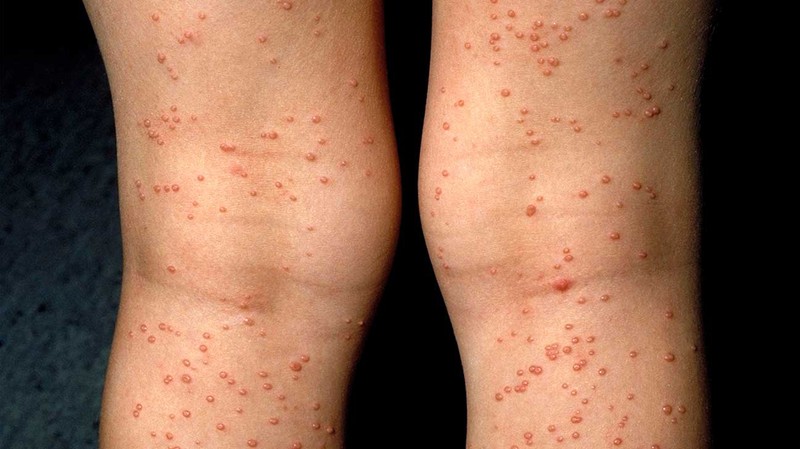Introduction
A rash is a change in the color or texture of skin. Most of the time it is associated with redness, swelling, itchiness or pain. Skin changes are present in almost all the patients with Human Immunodeficiency Virus (HIV). The symptoms on the skin might indicate the disease stage, reflecting the immune cell count (CD4) in HIV patients. Some skin changes such as the one caused by Karposi’s sarcoma are characteristic for HIV. In this article, we will explore the types of HIV skin rash and how to identify if the skin rash is caused by HIV infection. You may also visit our health center page for further information about HIV.
What is HIV?
HIV is a disease in which the virus attacks the immune cell known as CD4 cells in our body. As the disease progresses, the level of CD4 might fall which increases the vulnerability of opportunistic infections.
Transmission of HIV
HIV is transmitted through sexual intercourse, shared needle or mother to child transmission (which might occur during birth process or during breastfeeding).
Types of HIV skin rash
HIV seroconversion rash
HIV seroconversion is the early stage when one is first infected with HIV. A skin rash might be the first sign of HIV illness. After 3-6 weeks of HIV infection, rashes that are pink with size up to 1cm might erupt, commonly on the trunk and occasionally on the face, scalp, arms or thighs. The rashes consist of both flat and small bumps. It will go away after the body produces antibodies against HIV.
Seborrheic dermatitis
Seborrheic dermatitis is a skin irritation which commonly affects areas with a rich supply of sebaceous glands such as scalp, trunk, eyebrows, beard, ear, armpit and groin. It is present with a greasy scaling of the skin or an inflamed red rash with or without itching. It is common in HIV-infected patients but in a more severe form and extensive spread in some cases.
Opportunistic infection
As the disease progresses, the white cell count of the body might continue to drop to a level that the body is susceptible to various infections. It is known as the opportunistic infection.
Shingles
Shingles also known as the Herpes Zoster is a disease caused by the reactivation of Varicella-zoster Virus (VZV) in people with weak immunity.
It is manifested as painful fluid-filled rashes which follow a specific pattern, commonly present on the chest, neck, forehead and the back. The fluid-filled rashes will then form crust over. Patients might also experience fever and headache.
Karposi’s sarcoma
Karposi’s sarcoma is a form of cancer in cells from blood vessels and lymphatic systems which are infected with Human Herpes Virus 8 (HHV-8). It begins with a red to purple-red skin rash which rapidly develops into a plaque, commonly present at the head, neck and back.
How Do You Know If A Skin Rash Is Caused By HIV Infection?
Patients infected with HIV might manifest rashes as an early symptom. Alongside the rashes, the patient might also experience flu-like illnesses and multiple lymph nodes swelling. Weight loss may be apparent in early stages of the disease.
Patients experiencing rashes with a possible exposure to HIV should raise the clinical suspicion of HIV.
Conclusion
Certain skin changes are classic symptoms which might lead to clinical suspicion of HIV. If you are suffering from an unexplained skin rash, do consult a doctor immediately. An early treatment of HIV can prevent the progression of the disease. Treatments are available to lower the level of HIV in the body to an undetectable level.

